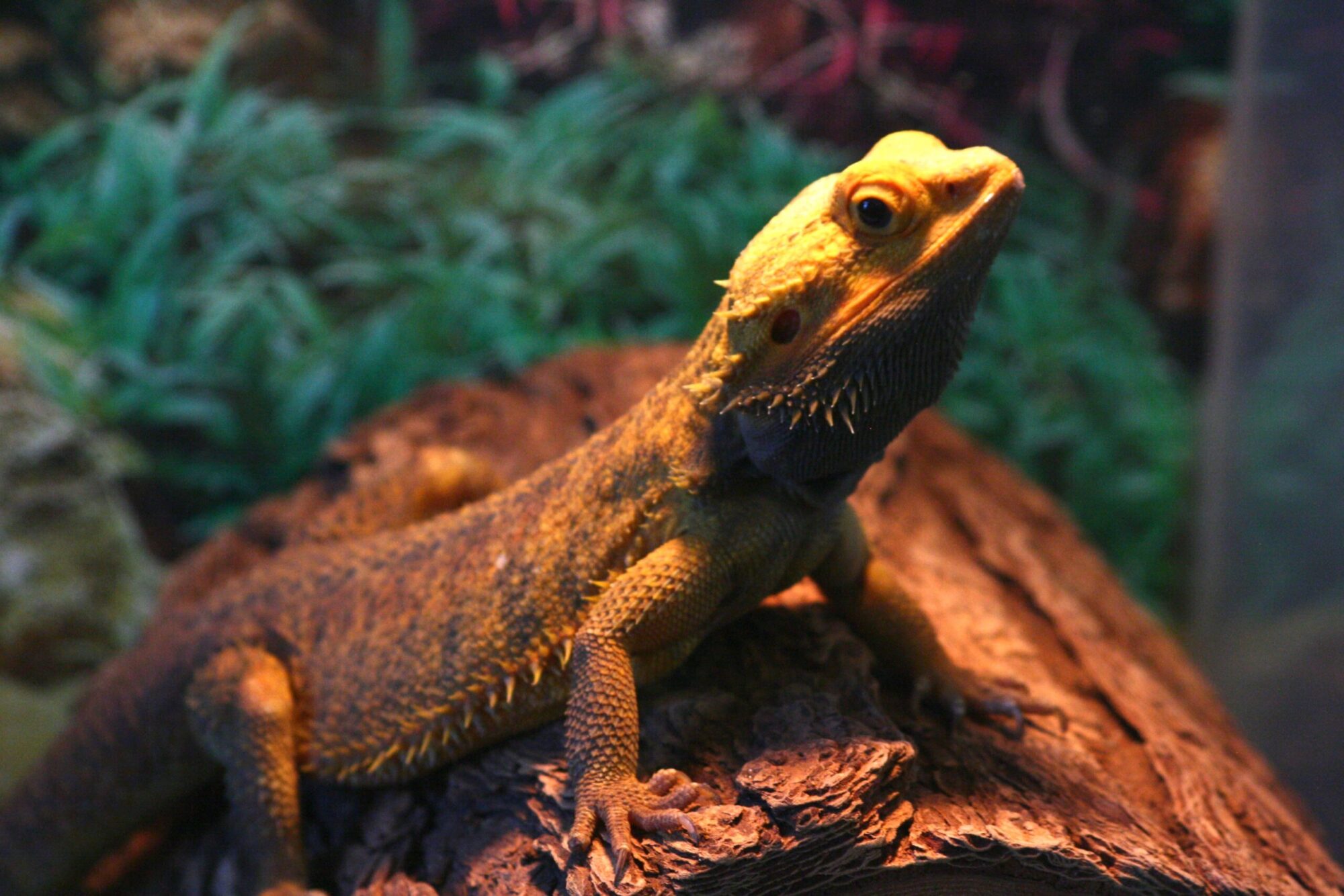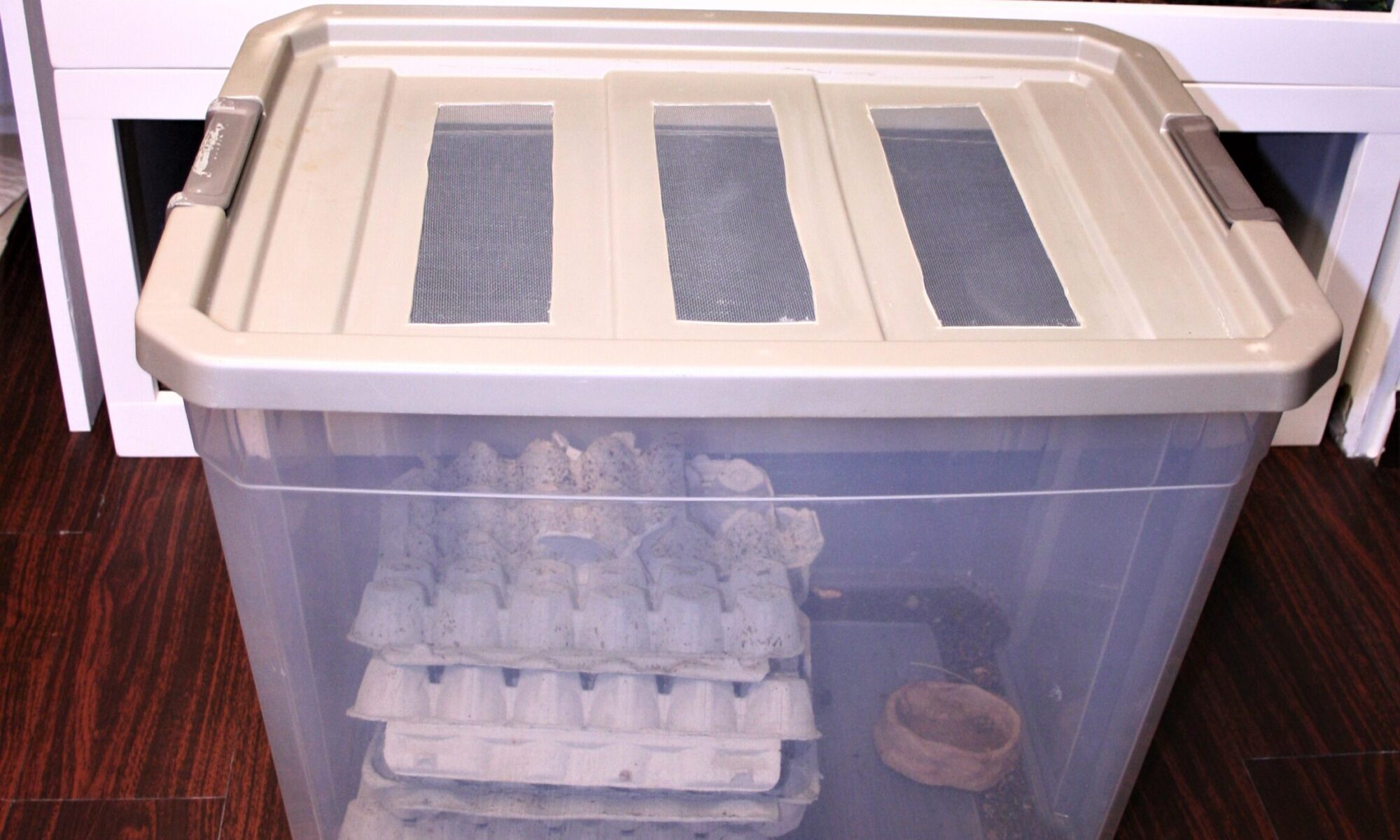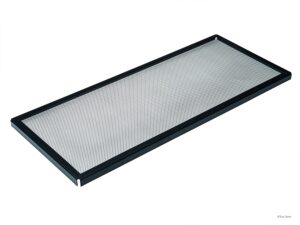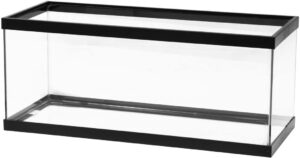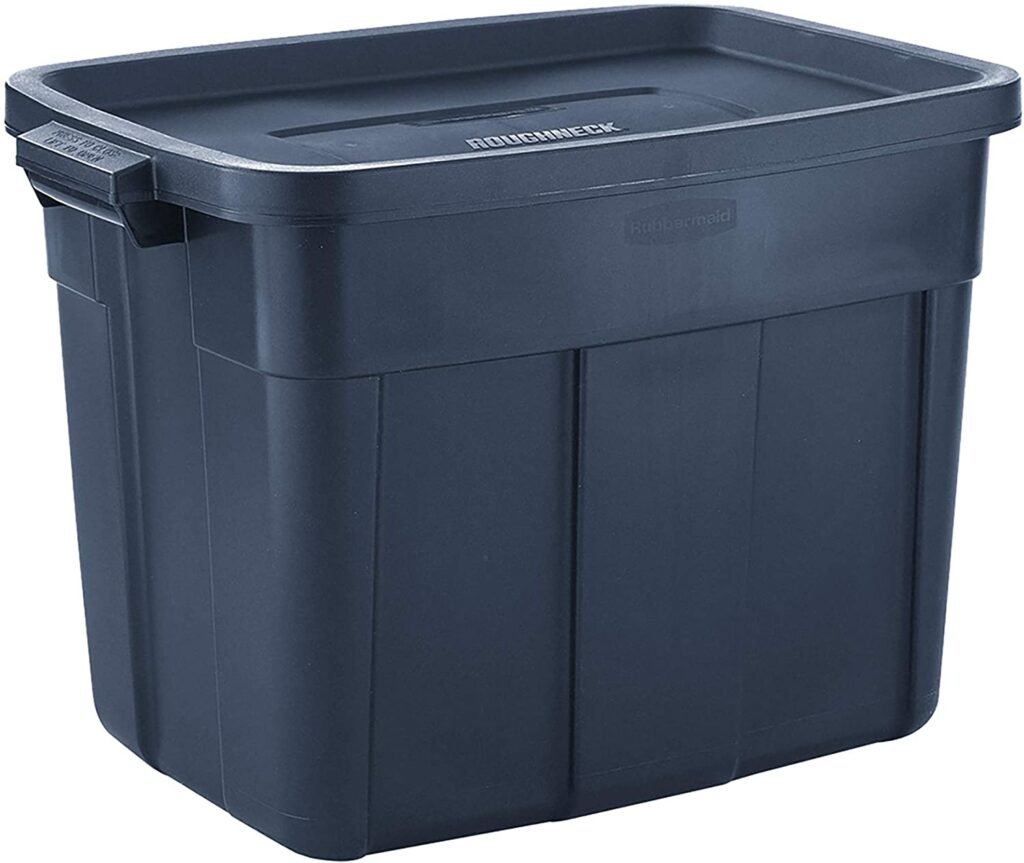Starting a dubia roach colony is the first step in creating a reliable source of nutritious feeder insects that’ll give you generations of buggy goodness for your pets to enjoy. Let’s take a look at all the stuff you’re going to need:
- Aquarium tank or Rubbermaid/Sterilite tub with a lid.
This is where your colony is going to live. Make sure it comes with a lid that closes. This is more for keeping outside bugs from getting into your setup and possibly contaminating it. I use a regular 18 gallon Sterilite tub with a locking lid.
- Some sort of wire mesh or window screening and glue/tape (for the tub option).
You’ll use this to make vents in the lid to help with air circulation. I cut out rectangular holes in the top of my lid and hot glued the mesh over them for the vents.
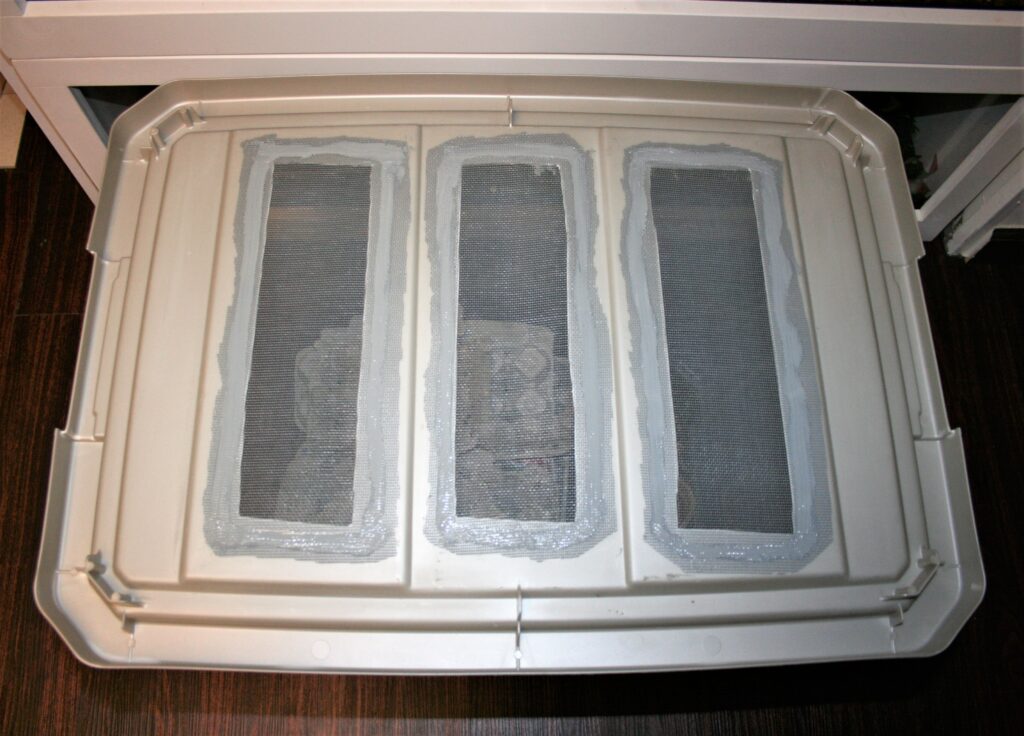
- A heat source and a thermostat/rheostat.


Dubias thrive at 80-90 degrees F. Unless your home or garage is a muggy 85F with a humidity of 40-60%, you’re going to need to have a heat source for them to breed. And that heat source should ALWAYS be regulated with a thermostat or rheostat. These don’t have to be fancy or expensive as long as they work. The heat mat doesn’t have to be big, but it needs to cover at least 1/3rd of the bottom or side of the tub. You can also use a ceramic heat emitter on the top of the lid of your setup, as long as the part of the lid you are placing it on is made from metal mesh (aka a vent you made or preferably a metal screened aquarium lid if you are using a tank instead of a tub).
- Egg flats.
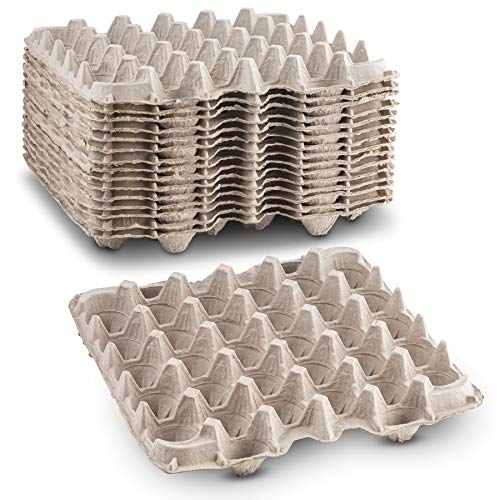
These are the square cardboard flats used to transport large quantities of eggs. They’re great for creating a layered “home” for your roaches to hide in so they feel secure. You can easily buy them online. I wouldn’t advise using ones that you get from the store with your eggs- they could contain chemicals or bacteria from the eggs that could adversely affect your roaches’ health.
- Roach chow (optional).

In order to give your roaches a healthy amount of protein in their diet, some use a supplemental roach feed or chow. Some people use dry dog or cat kibble instead. I occasionally feed my roaches Mazuri Better Bug Blend to give them some extra protein and nutrients. Only feed high protein meals about once a week or less to cut back on the amount of uric acid your roaches store that would be transferred to your pets. Normally this shouldn’t be an issue, but if your critter already has kidney issues, feeding bugs with higher levels of uric acid isn’t the best idea.
- Water crystals and a bowl with rough edges (optional).

If you aren’t going to use wet paper towels to keep your bugs hydrated, the other option is to use water crystals in a bowl with rough edges so they can climb in and out of it to drink. You can find water crystals in the gardening section of most home improvement stores (just the plain crystals, NO fertilizer etc.). I use the Miracle Gro brand of plain water crystals.
Now that we’ve outlined all of the supplies, let’s get into how to actually set everything up.
First off, pick a good place for your new roach tub/tank to sit. I’d advise against having it sit on carpet, especially if your heat source is under the tub. Also think about who could potentially reach the tub. Do you have kids and/or pets? Then putting it higher on a shelf may be your best bet. As I mentioned in my last post, some people do develop allergies to dubias with continued exposure, so make sure to put the bin somewhere with less traffic (garage or closet instead of your living room).
When you set up your tub or tank, make sure your heat source is set up properly and connected to the thermostat/rheostat with the temps set to around 90F. You can test out if this is the right temp for your setup by measuring the temps at different areas inside of the tub. If you’re using a heat mat/pad, don’t let it get squished under the weight of the setup. I usually stick little feet or “risers” to the bottom of my tub, set it on some tile, and sandwich the heat mat in between. If you put your tub directly onto your mat, it could eventually damage it and cause your mat’s heating elements to be exposed or spark (this happened to me once, it wasn’t a good time). Always err on the side of caution when using a heat source in your home.
Now you can add the egg crates and the food/water dishes. I stack my crates up on the side of the tub with the heat mat underneath and put the water crystals on the other. Some people just put their food items on a paper plate on the opposite side than the crates, and others use rough bowls that the roaches can climb. Some even construct little humid huts and “kitchens” for their roaches out of little plastic takeout containers.
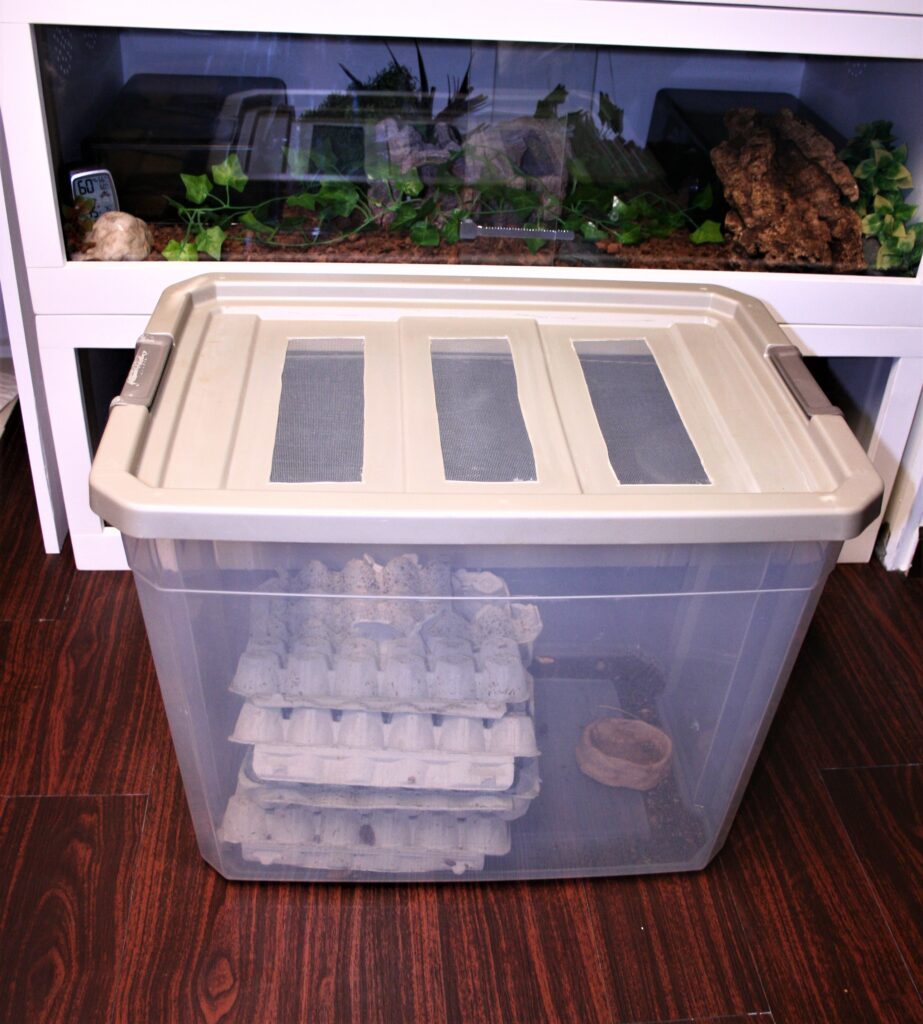
All that’s left is to add your adult roaches and wait. You’ll want to give them some space for the first couple of weeks, only checking in on them to refill their water and food. This lowers their stress levels and lets them get accustomed to their new place. Full, stress-free roaches equate to breeding roaches. Within the next month or so, you should start to see nymphs mixed in with the adults in the colony. These guys start off pretty small and look more like roly-poly bugs in their nymph stage than actual cockroaches.
A couple of issues to watch out for:
- Too humid.
If your dubia colony has moisture levels that are too high, it could become a breeding ground for mites and mold. This typically occurs when too much wet plant matter is put in at a time and rots, or when there isn’t enough ventilation. Make sure to only feed as much food as your roaches can each in a day or two. I throw in some food every other day to avoid any build up. At the end of the week, make sure to throw out any leftover scraps at the bottom of the tub so they don’t pile up.
- Too many males to females.
If there are too many males in one colony, it will hurt the reproduction rate. Males that have more competition for females will often try to interrupt other males in the process of mating (rude), or even cannibalize smaller nymphs (rude AND bad parenting). I try to keep my male to female ratio at about 1:5.
Congratulations! You now have your own dubia roach colony. These little dudes aren’t picky eaters, so feel free to give them a variety of veggie and fruit scraps. I usually feed them carrots, sweet potatoes, kale, collard greens, apples, oranges, and butternut squash. Sometimes I’ll even throw in the leftovers from my reptiles’ salads that they didn’t eat to avoid any waste. I think it’s neat that a dubia colony can act as a mini composting system. I even use their frass as fertilizer in my garden.
